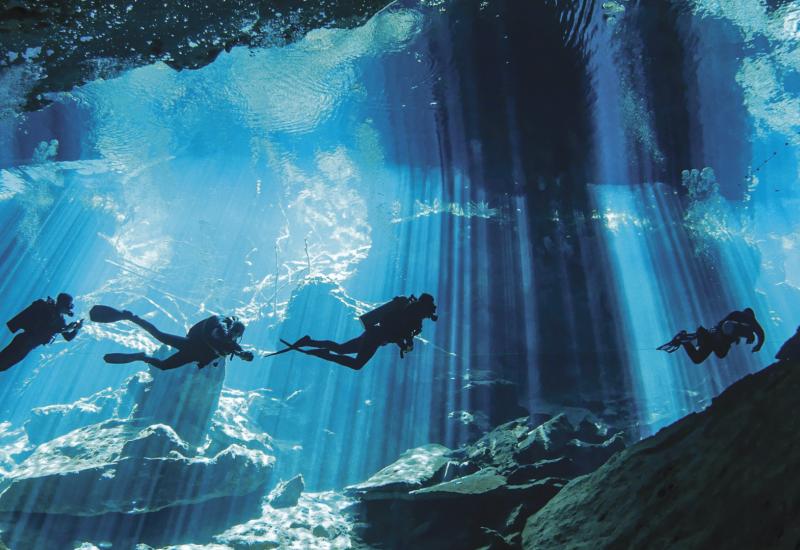Ask DAN: When can I go to altitude after diving?

Divers Alert NetworkWhen can I go to altitude after diving?
Understanding how pressure affects the body is essential for developing, interpreting, and applying safety precautions when scuba diving. Many divers are aware of recommendations against flying too soon after diving. However, it is also important to consider and avoid the dangers associated with ascending to high elevations after diving.
Within Earth’s atmosphere, ambient pressure decreases as elevation or altitude increases. This inverse relationship poses a risk to divers because a reduction in the ambient pressure surrounding the body following scuba diving can lead to decompression sickness (DCS).
Research on Flying After Diving
The serious risks associated with DCS in relation to altitude instigated a series of research trials conducted by DAN and Duke University for seven years from1992 to 1999. The data collected from these trials were used to develop the current consensus guidelines for divers to follow when flying or ascending to elevation after diving. Three major guidelines were established to inform divers of recommended minimum surface interval times. Divers who do a single dive with no decompression should wait at least 12 hours before flying. Divers who do multiple dives or multiple days of no-decompression dives should wait at least 18 hours before flying. Finally, divers whose dives involve mandatory decompression stops should wait at least 24 hours before flying after diving. These guidelines are minimum sur-face interval recommendations. Longer surface intervals further reduce the risk of DCS. The study that informed these guidelines was conducted on individuals at rest in dry hyperbaric chambers. Actual conditions will differ from those in the study because divers will be submerged and partake in moderate to strenuous exercise during their dives. The simulated nature of the baseline data reinforces that conservative dive planning—including surface interval planning—maximizes diver safety.
Applications
The minimum surface interval guidelines proposed by DAN apply to divers expecting to travel to both altitudes and elevations of 2,000 to 8,000 feet above sea level. This applies to driving, hiking, and air travel. Although commercial aircraft typically cruise at altitudes ranging from 30,000 to 42,000 feet above sea level, their cabins must be pressurized to an equivalent altitude of 8,000feet or lower.
It is important to consider that there is an unlikely but present possibility of an emergency decompression occurring in an aircraft at altitude. In such a circumstance, oxygen masks drop to sup-ply passengers with sufficient oxygen to remain conscious during the emergency descent that a plane would conduct to re-turn to safe cabin pressure. The extreme drop in pressure that occurs during this time may severely exacerbate the risk of decompression sickness in people who recently participated in diving. While the risks associated with plane depressurization on divers are uncommon, they could be severe if they occurred.
DCS resulting from divers driving or hiking to high elevations after diving should also be considered. Scuba divers are advised to use caution when planning return routes home from a day of diving.
An example of a location with high elevation in proximity to popular dive sites is the active volcano Mauna Kea on the is-land of Hawaii. The rate at which cars can ascend Mauna Kea’s 13,796-foot summit poses a risk to divers who may not have allocated sufficient surface interval time between diving and sightseeing or travel across the island. Often mountain pass roads such as the 6,632-foot maxi-mum elevation saddle road of Mauna Kea have a gradual increase in elevation that can be easily obtained by a car over the course of only one to two hours, which is insufficient time for the body of someone who recently dived to acclimate to the conditions of increased altitude.
Whether one’s diving pursuits are centered on a recreational diving vacation, a scientific diving research expedition, or work as a dive professional, a common unifying theme among many divers is to try and safely maximize dive time. Therefore, it is essential for divers to be mindful of planning an adequate surface interval between diving and ascent to maximize safety. Divers who express or are suspected of exhibiting any signs or symptoms of decompression sickness should always seek medical advice and care before flying or ascending to altitude in order to maintain their personal safety










